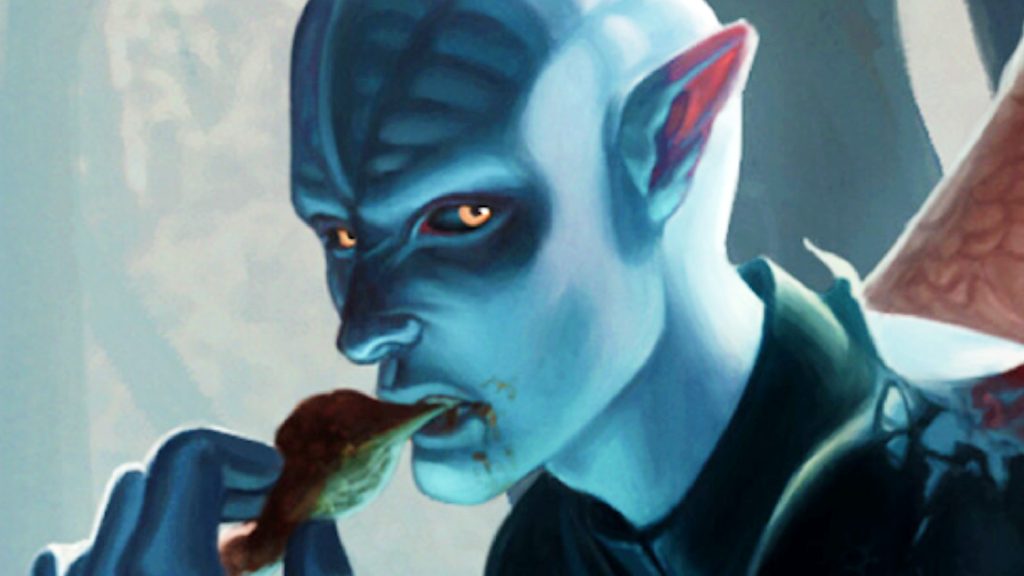Stellaris Biogenesis has largely been a success, even if Steam ratings tell a different story. The new expansion for Paradox’s space strategy game has been marked down because of its rocky launch and the game’s troubled 4.0 update, yet the reviews are almost all filled with praise for the DLC itself. Creative, flavorful, and offering some of the most unique ways to chart your journey through the 4X game, it’s an undeniably promising new chapter. Speaking exclusively to PCGamesN, game director Stephen ‘Eladrin’ Muray reveals his personal favorite addition, and talks about the team’s plans for future expansions.
In the wake of Biogenesis, I asked Muray about the rocky launch of Stellaris 4.0 and the possibility of separating out updates and DLC in the future. The good news is that, once the technical wobbles of the new version are ironed out (and many already have been), the response to Biogenesis is giving Paradox more confidence to get weird with the space game’s future expansions. It introduces three new ways to play, along with fresh genetic ascension paths and the ability to hatch, grow, and unleash a titanic Behemoth capable of munching its way through entire planets.
Muray says he wasn’t sure what made the Behemoth a ‘crisis’ until he was shown some early demos of it “getting hangry, raging, and ending the game. We were like, ‘Oh, now we understand.'” He notes that the team has rolled out more possible outcomes in subsequent patches. “Basically, you can leave the galaxy or stick around, and if you stick around then you will see why this is a crisis, as it goes around devouring everything.”
While the Starlit Citadel origin feels like classic Stellaris, bringing a defensive megastructure into play to supplement its defensive playstyle, the other two options are more distinct. Muray tells me his personal favorite is the Evolutionary Predators, an adaptive species that looks to combine phenotypes to reach the ultimate form. “I liked the idea from the beginning, and it was so much more fun to play than I expected, so it’s one of those that turned out better than I had ever hoped.”
By far the big winner, however, is Wilderness, an origin that sees you take the role of a sentient planet capable of spreading across the stars by infesting other worlds with its unique biomass. Muray says he wasn’t anticipating players to latch onto this quite as strongly as they did. “I knew that the Wilderness would be interesting, and a totally different way of playing. It’s weird, and semi-disconnected from everything else, and that makes it cool. You have to play it, because it’s so weird.”

“I wasn’t expecting it to hit that hard. It seems that every second post is people talking about Wilderness and biomass – ‘I spent all my biomass, what do I do now,’ that sort of thing.” He chuckles, “I think we need to do something to be like, ‘Hey, don’t spend all of it; it needs to grow. Biomass is pops. Don’t eat all your pops.’ I figured that people would play it once or twice and come back to it once in a while, but it seems like we’ve got a lot of Wilderness mains out there now, which I was surprised by.”
With that popularity in mind, Muray says, “I’d love to see more origins like that in the future of Stellaris, where they’re just totally off-the-wall and weird.” He points to some of Crusader Kings 3’s more experimental ideas, such as Adventurers and Nomads, and remarks that Stellaris is blessed by having access to “every sci-fi trope imaginable, which gives us a huge amount of design space to play around in.”
After nine years, a lot of the big beats have already been hit, and Muray says it can be hard working out how a new faction should feel distinct from those that have come before. The Machine Age and now Biogenesis have been notable steps forward, and the next Stellaris DLC, due later this year, is delving into the mysteries of the Shroud. “I didn’t want to wait another year [for that]. That would have been very sad.”

Stellaris’ long life also helps the team to find new creative spaces. “Since we are so familiar with the systems we have, we know what we can’t do right now, and then we know what to ask for in order to bend and break them entirely. There are some limits here and there that are like, ‘You cannot do this sort of thing.’ But what if we could? Then we can ask the coders if we can take this immutable law of Stellaris and break it. And then they give us sad looks and cry,” he laughs, “but then they deliver.”
Muray considers the Wilderness origin to be “wildly experimental – it’s nothing like anything else in Stellaris.” Based on the results, however, he says Paradox is “likely to do more things of that nature in the future.” He hypothesizes briefly on some possibilities, such as an empire that begins as roaming nomads before settling down to become a more traditional faction after a while. “This is just random ideas, not something I have a design doc for,” he emphasizes, “it’s easy to get me rambling.”
As for the ten-year anniversary in 2026, Muray says he’s looking forward to “a super-cool trailer and a speech,” and you can expect a new round of DLC, but the team is not currently planning anything as transformative as a 5.0 update for next year. Nevertheless, he’s confident that the current overhaul will allow the game to keep growing for at least a few more years, rather than moving on to a sequel. “Let’s put it this way: I wouldn’t have done 4.0 if I was planning on stopping any time soon.”

Stellaris 4.0 and the Biogenesis DLC are out now. Biogenesis is priced at $24.99 / £21.99, or available with the Season 9 expansion pass for $44.99 / £37.99. Season 9 is planned to continue with the Shadows of the Shroud expansion in the third quarter of 2025, and the Stellaris Infernals species pack in the fourth quarter. If you’ve ever wanted to embody a living planet, head here to get started.
You can also try another of the best 4X games in 2025 if you love to explore, expand, exploit, and exterminate, or perhaps experiment with one of the best grand strategy games instead.


